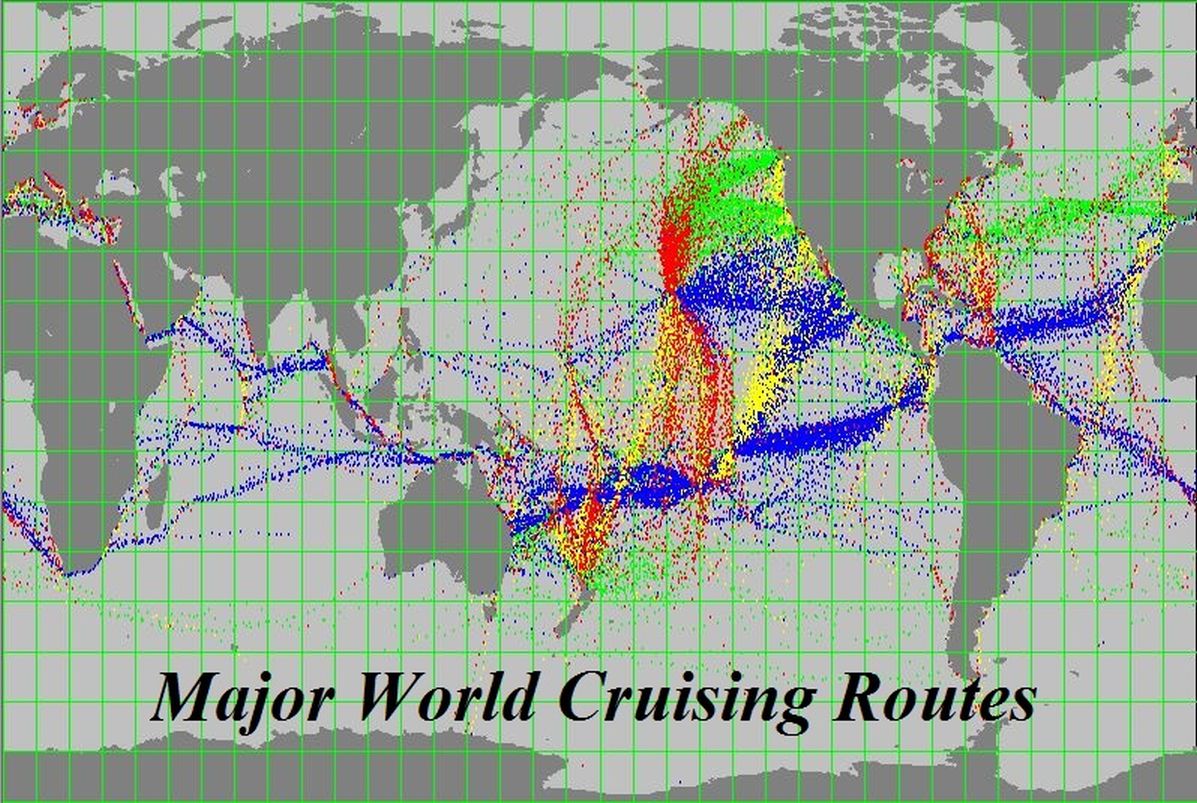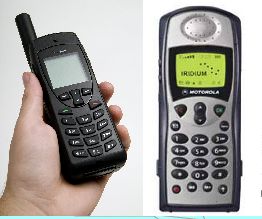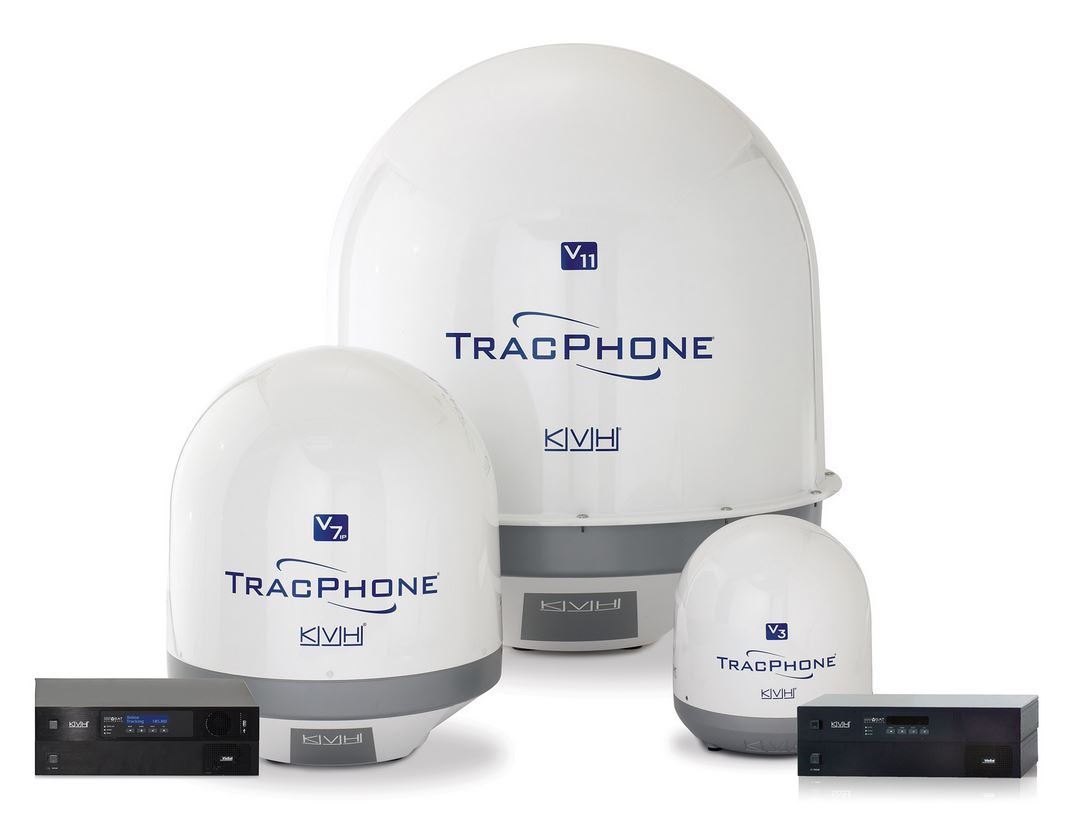| |
Offshore having reliable, long
range, two-way communications is key:  For extended
offshore passages, having reliable, two-way, long range,
voice & data communications is absolutely essential
for getting the most out of your working relationship
with a weather router. For inshore communications (less
than about 5 nms from shore), Wifi, cell phones &
portable computers, are very common. Today almost every
cruiser carries multiple cell phones and one or more
computers, and almost every marina worldwide now offers
WiFi service for a very limited range around the marina
property. Having a WiFi boosting antenna can extend WiFi
range up to a mile. Once away from a marina, close in
coastal cruising or island hopping (when within 5 nms of
shore and cell towers), a cell phone, tablet or laptop
can provide quite good marine weather information. Also
from 0-about 50 nms from shore a standard marine VHF
two-way tranceiver can provide reliable radio
communications and at least reception of VHF weather
forecasts. In the US NOAA Marine VHF weather broadcasts
can provide mariners with regional marine weather
forecasts & warning information. But, beyond about 50
nms from shore and especially in the open ocean, hundreds
or even thousands of miles from shore, having some form
of reliable, two-way, long range comunications is
essential. Thre are three communications systems
available, satellite phone (voice/data), HF SSB (marine
or ham, voice/data) or satellite broadband equipment,
(voice/data). For extended
offshore passages, having reliable, two-way, long range,
voice & data communications is absolutely essential
for getting the most out of your working relationship
with a weather router. For inshore communications (less
than about 5 nms from shore), Wifi, cell phones &
portable computers, are very common. Today almost every
cruiser carries multiple cell phones and one or more
computers, and almost every marina worldwide now offers
WiFi service for a very limited range around the marina
property. Having a WiFi boosting antenna can extend WiFi
range up to a mile. Once away from a marina, close in
coastal cruising or island hopping (when within 5 nms of
shore and cell towers), a cell phone, tablet or laptop
can provide quite good marine weather information. Also
from 0-about 50 nms from shore a standard marine VHF
two-way tranceiver can provide reliable radio
communications and at least reception of VHF weather
forecasts. In the US NOAA Marine VHF weather broadcasts
can provide mariners with regional marine weather
forecasts & warning information. But, beyond about 50
nms from shore and especially in the open ocean, hundreds
or even thousands of miles from shore, having some form
of reliable, two-way, long range comunications is
essential. Thre are three communications systems
available, satellite phone (voice/data), HF SSB (marine
or ham, voice/data) or satellite broadband equipment,
(voice/data).
Global,
open ocean communications via satellite telephone or HF
SSB:
The world
map at the right shows the popular ocean cruising routes
of the world. (You can click on the image to enlarge it).
In the Pacific the major ocean cruising routes between
ports on the west coast of North America, Central America
and South America south and west to Hawaii, the
Marquesas, French Polynesia, New Zealand & Australia.
In the Atlantic the major ocean cruising routes between
ports on the US east coast and Bermuda and the Caribbean,
between the Caribbean, US east coast and Bermuda
transAtlantic to the Azores, the UK, Portugal and
Gibraltar, and from Gibraltar to the Canaries, Cape
Verdes and west to the Easten Caribbean, Panama and US
east coast. Some vessels continue west from Australia to
Indonesia, the Red Sea, islands in the Indian Ocean, to
South Africa and NW to Brazil and Caribbean. These and
other ocean cruising passages are 1000 to 4000 nms in the
open ocean and require vessels have one or more means of
reliable, two-way, long range, communications,
preferrably by voice and by email. (The cruising routes
chart is courtesy of Pangolin/YOTREPS).
For long
range, open ocean two-way communications there are
basically three options available, 1. small, inexpensive
handheld satellite phones, such as Iridium, Inmarsat
& Globalstar, 2. permentally installed high frequency
Single Sideband radio, (HF SSB) systems. and 3. the most
expensive option, permanently installed satellite
broadband systems such as BGAN, FleetBroadband or KVH
TracPhone. Whatever system you may choose you should know
its capabilities and limitations. Iridium is the dominant
service and offers true global coverage. Globalstar
though inexpensive its coverage is unreliable and not
global by any means. Globalstar coverage does not include
the South Pacific Ocean, the South Atlantic Ocean or the
Indian Ocean and in the areas it is reported to cover,
communications is unreliable. Some sat phone handsets can
enable email but some do not. HF SSB communications is
dependant on the solar cycle, the time of day, the
distance between vessels, and other factors. Satellite
based systems can enable point to point communications
but not group or "net" communications. You must
know the sat phone number to make the point to point
call. HF SSB systems, (Marine or Ham) enable point to
point and group or "net" communications.
Depending on the type of equipment and service the
various systems can enable the two-way exchange of voice,
E-mail, short SMS/text messages, GRIB files & digital
images. The question is really more a matter of cost,
coverage, level of service and redundancy that you want
to have. Cell phones are inexpensive but very limited in
range. Sat phones can provide regional or global coverage
but cost more. Of the three satellite phone service
providers Iridium is the best from a coverage and
reliability standpoint. HF SSB can permit free airtime
and a wonderful mix of personal, weather information and
cruiser resources like regional SSB nets. Whatever system
you choose its best to have a backup system should the
primary system become inoperable for any reason. Many
cruisers have both a satellite based system like Iridium
for point to point voice and email, and an HF SSB system,
(Marine or ham), for point to point or "net"
operation, voice and email. Almost all cruisers these
days have cell phones and one or more computers aboard,
(tablet, notebook, or laptop).
Satellite
telephones and service providers:
 There are several
sat phone service options, (Iridium, Globalstar tand
Inmarsat). These services all have advantages and
disadvantages. 95% of my weather routing clients use
Iridium sat phones & service for their offshore
communications. For detailed and reliable communications,
vessel position reports, weather forecasts and routing
advice, email (not text messaging!) for many reasons, is
much better than voice. The newest and best sat phone I
have seen to date, (for email & voice) is the Iridium
#9555. Iridium phones The sat phone to
the left is the newer Iridium 9555 sat phone with built
in GPS and one touch SOS. To the right is an older but
very good Iridium 9505A sat phone. Clicking on the phones
image will take you to the Iridium Phones information
page. A new device worth considering is the Iridium
"Go" unit. Iridium "Go", which
creates a wifi "hot spot"aboard your boat
accessable by wifi enabled devices such as cell phones,
tablets and laptops. There are several
sat phone service options, (Iridium, Globalstar tand
Inmarsat). These services all have advantages and
disadvantages. 95% of my weather routing clients use
Iridium sat phones & service for their offshore
communications. For detailed and reliable communications,
vessel position reports, weather forecasts and routing
advice, email (not text messaging!) for many reasons, is
much better than voice. The newest and best sat phone I
have seen to date, (for email & voice) is the Iridium
#9555. Iridium phones The sat phone to
the left is the newer Iridium 9555 sat phone with built
in GPS and one touch SOS. To the right is an older but
very good Iridium 9505A sat phone. Clicking on the phones
image will take you to the Iridium Phones information
page. A new device worth considering is the Iridium
"Go" unit. Iridium "Go", which
creates a wifi "hot spot"aboard your boat
accessable by wifi enabled devices such as cell phones,
tablets and laptops.
There are
many satellite phone & service providers. Equipment
can be purchased or rented by the day.
 Satellite phone & service providers: Satellite phone & service providers:
GlobalCom - http://www.globalcomsatphone.com/
Blue Cos Mo - http://www.bluecosmo.com/
Global Marine Networks
- http://www.globalmarinenet.com/
The Satellite Store - https://satellitephonestore.com/
Sail smart.
Sail safe.
Cheers...Capt
Bob
|



